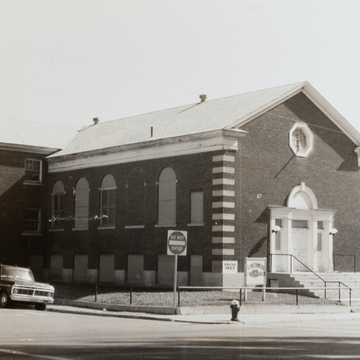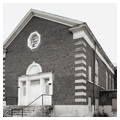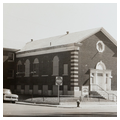You are here
Centennial Fine Arts Center (Ely L.D.S. Stake Tabernacle)
This is a prominent reminder of the presence of the Church of Jesus Christ of Latter-day Saints in Ely. The two-story brick tabernacle is T-shaped, with a gabled nave extending toward Aultman Street and a rear transept capped by a hipped roof. Brick and concrete quoins and a frieze embellish the walls. Cornice returns, a Palladian-arched main entrance, and keystones in the semicircular-topped window openings are details taken from the Colonial Revival style. The Mormons built tabernacles (of a lesser order than temples) as houses of worship for local congregations, or stakes. In his study of nineteenth-century Mormon architecture, C. Mark Hamilton defines the stake as a Mormon ecclesiastical unit “roughly equivalent to a diocese,” which often included an entire town and outlying areas. Ely, like other eastern Nevada towns, attracted increasing numbers of Mormons in the late nineteenth and early twentieth centuries as they moved westward from Utah. A late twentieth-century church located nearby replaced this tabernacle, which is now used as a community arts center.
Writing Credits
If SAH Archipedia has been useful to you, please consider supporting it.
SAH Archipedia tells the story of the United States through its buildings, landscapes, and cities. This freely available resource empowers the public with authoritative knowledge that deepens their understanding and appreciation of the built environment. But the Society of Architectural Historians, which created SAH Archipedia with University of Virginia Press, needs your support to maintain the high-caliber research, writing, photography, cartography, editing, design, and programming that make SAH Archipedia a trusted online resource available to all who value the history of place, heritage tourism, and learning.




